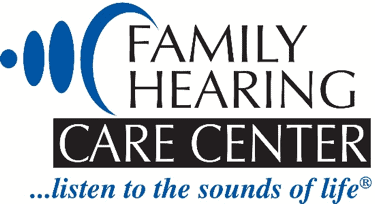
What Does It Mean to Have “Normal” Hearing?
Nearly 1 in 5 people have some degree of impaired hearing. Hearing loss is a medical condition that reduces a person’s capacity to hear and process speech as well as sound. Hearing loss has become the third most common health issue that people experience today. If you struggle to hear in places with background noise, find yourself asking others to repeat what they said, or turning up the volume on the TV, you may be experiencing changes to your hearing. Understanding what hearing loss is compared to normal hearing can illuminate what impaired hearing looks like and underscores the importance of intervening by seeking treatment.
What is Normal Hearing?
Hearing and hearing loss exists on a spectrum. Sound is measured in decibels (dB) which identifies the power (or loudness) of the sound. Frequencies of sound have a pitch that is minimally detectable. The lowest level of frequency that a person is able to detect is referred to as a hearing threshold. This captures the softest sounds that a person is able to hear and process. The softest or quietest sounds a person without hearing loss (and with normal hearing) is able to hear around 0dB. This is near complete silence and is the marker used to define what normal hearing is. Normal hearing is the ability to hear sound between 0 to 20dB. People without hearing loss can be anywhere on this spectrum – with some people being able to detect sounds at 5dB or 15dB.
Measuring Hearing Loss
There is a range of hearing loss. Hearing tests are used to identify the exact degree of impaired hearing a person is experiencing in each ear. This involves a process that measures hearing capacities in both ears which reveals the softest sounds a person is able to detect and process. Common hearing tests in blue pure tone and speech audiometry testing which involve sounds and speech being played at different pitches. You are then asked to identify what you are able to hear by pressing a button or raising your hand. This process will determine your hearing thresholds adn the degree of hearing loss present. Hearing loss can be mild to profound and is identified as the range of decibels you cannot hear, categorized as:
- Normal: 0dB to 20dB
- Mild: 20dB to 40dB
- Moderate: 41dB to 55dB
- Moderately Severe: 56dB to 70dB
- Severe: 71dB to 90dB
- Profound: 91dB+
These degrees of hearing loss range from struggling to hear speech during a quieter conversation to being unable to hear an alarm clock. If symptoms remain untreated, hearing loss can worsen which is why early intervention is important.
Recognizing Early Signs of Hearing Loss
Hearing loss typically occurs gradually so symptoms can remain unnoticed for quite some time. Being able to identify symptoms can help you intervene early. Common signs of hearing loss include:
- Tinnitus: a ringing or buzzing noise in one or both ears that only you can hear.
- Sounds are muffled or distorted.
- Struggling to keep up with conversations in environments with background noise.
- Frequently asking others to speak louder, slower, or repeat what they said.
- Lip reading to distinguish words.
- Turning up the volume on electronic devices (TV, phone etc.).
- Hearing over the phone is difficult.
- Pretending to hear to get through a conversation.
- Responding with “huh” or “what”.
- Feeling drained after conversations and social interactions.
- Skipping out on social gatherings and activities.
These symptoms can be mild to more proud ning, straining communication. This can impact relationships, social life, and overall health.
Prioritize Your Hearing Health Today
The first step you can take to address your symptoms is scheduling an appointment for a hearing test. Hearing tests involve a painless and non-invasive process that measures your hearing capacities in both ears. This identifies the degree of hearing loss you are experiencing and what your hearing needs are. Treatment is then tailored to meet your specific hearing needs. The most common treatment for hearing loss is hearing aids, electronic devices that help absorb and process speech as well as sound. This alleviates hearing loss symptoms and maximizes one’s hearing capacity. Hearing aids provide ample support, making it easier to hear in everyday environments. Treatment not only improves hearing health but quality of life in major ways. Contact us today to schedule an appointment for a hearing consultation!
